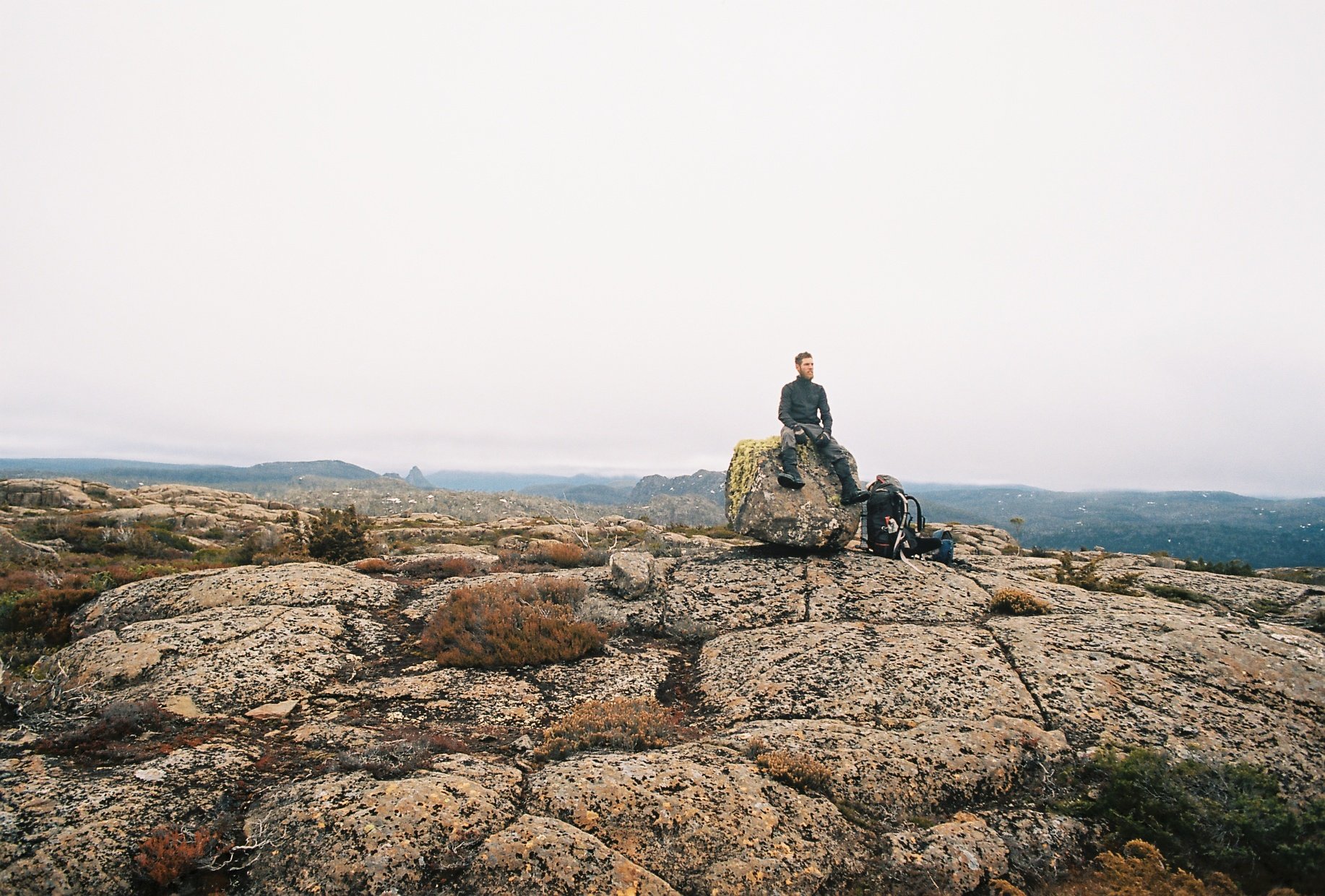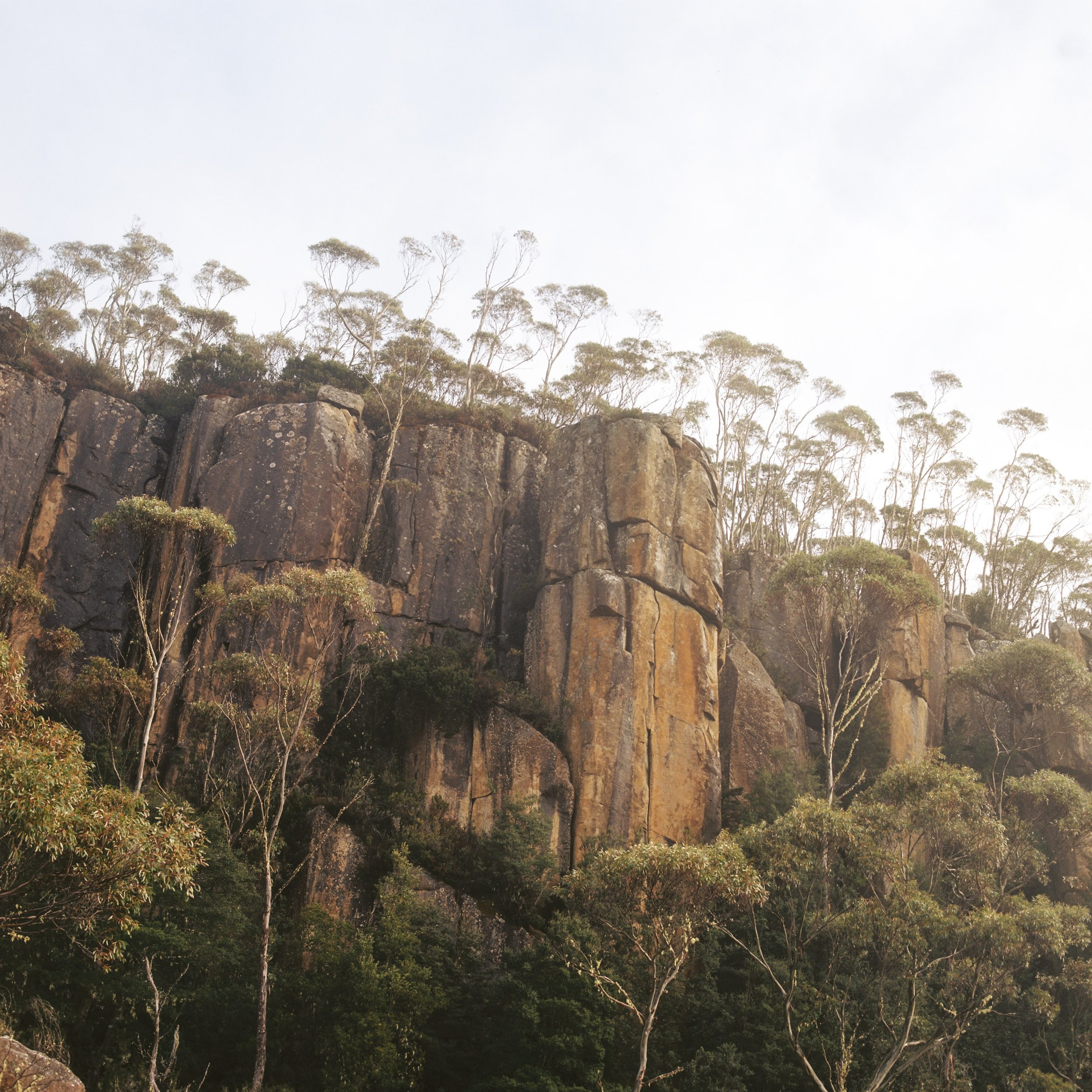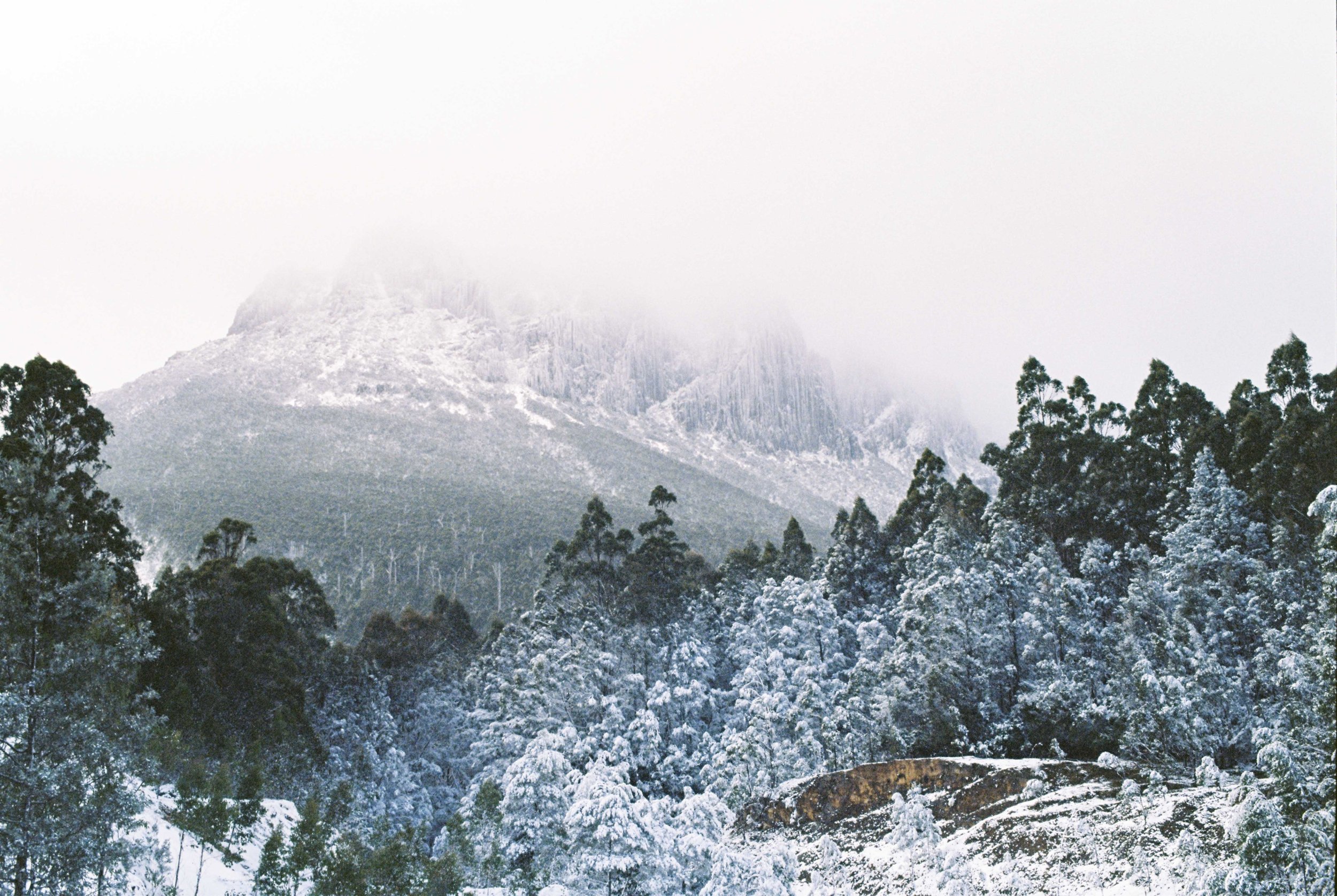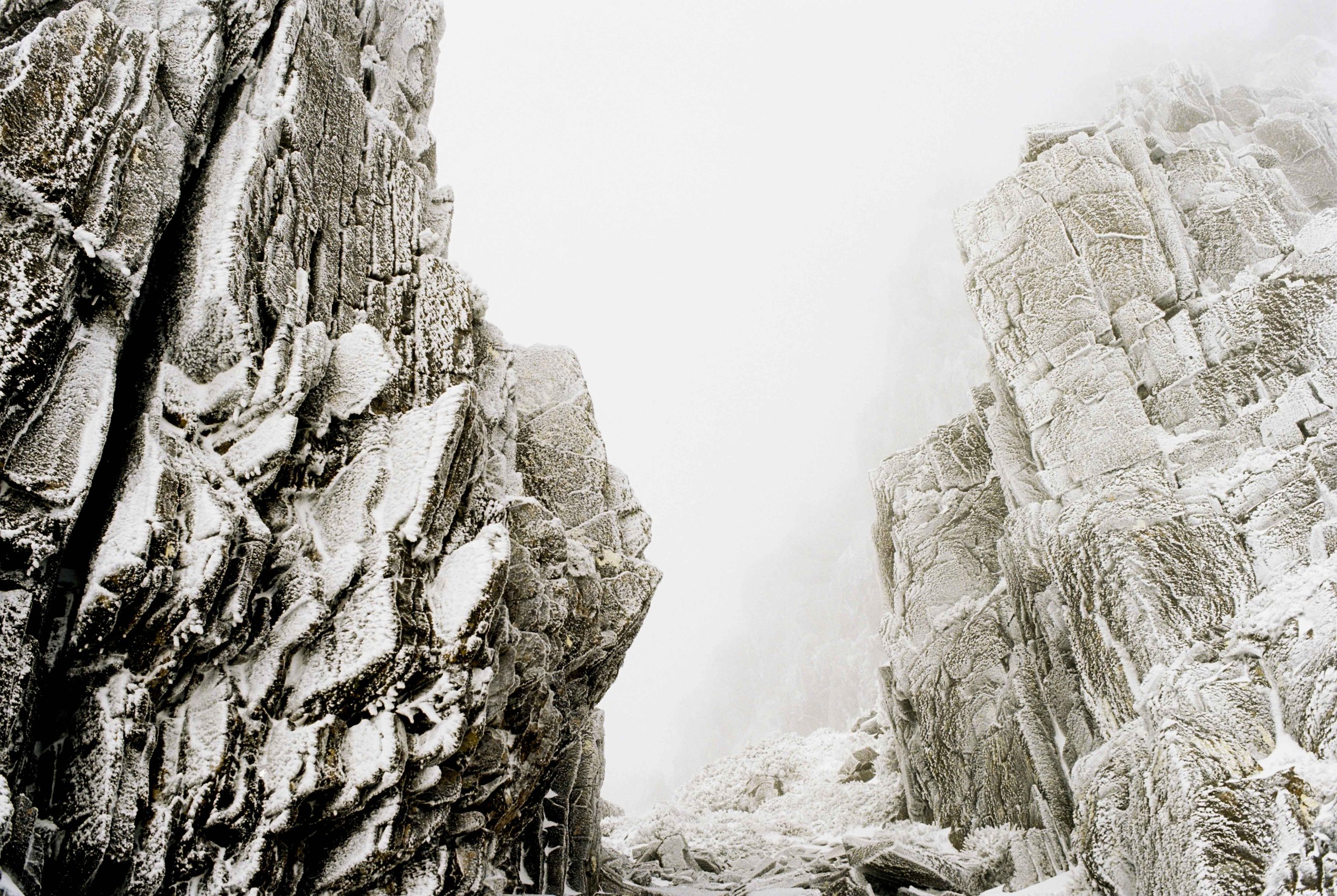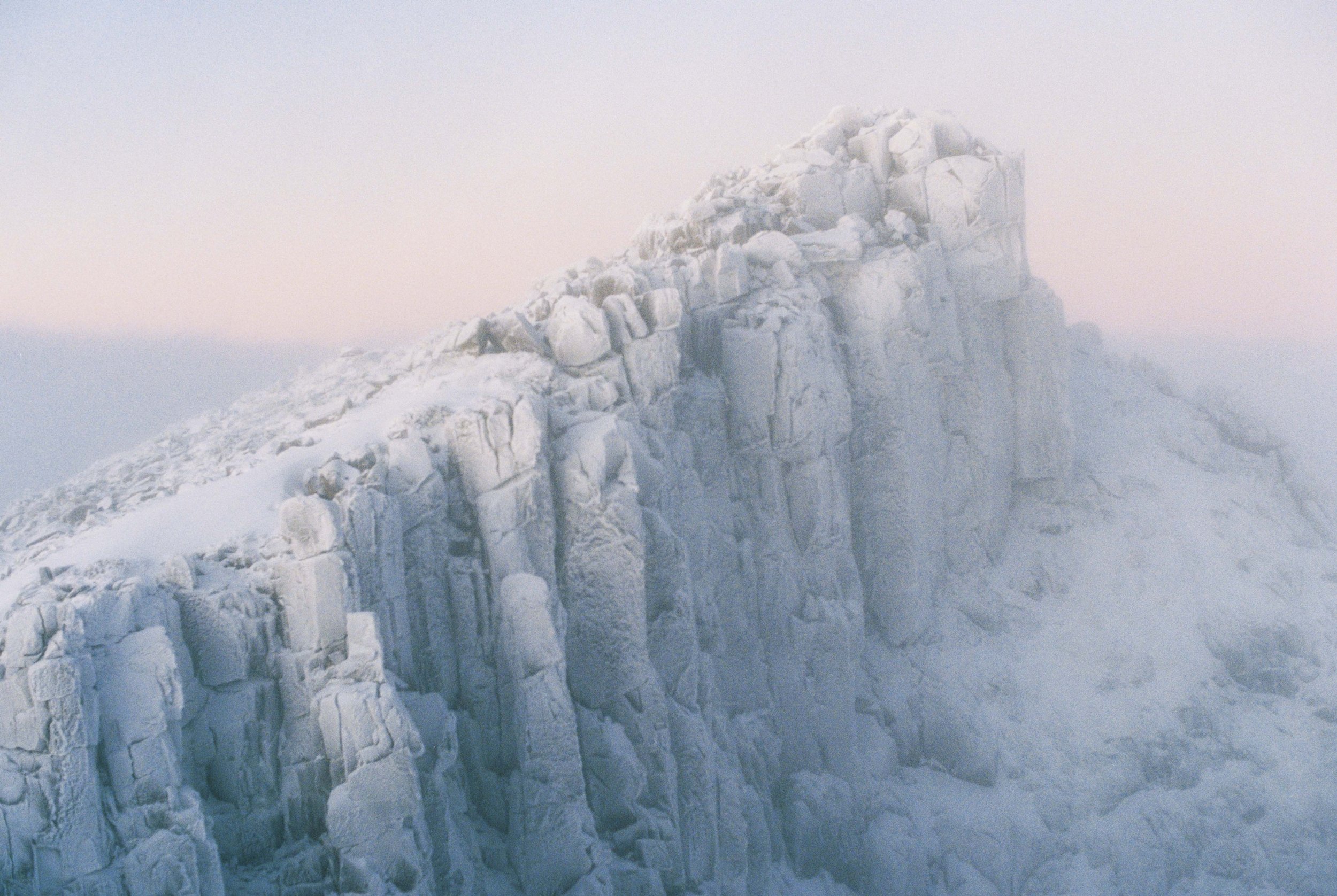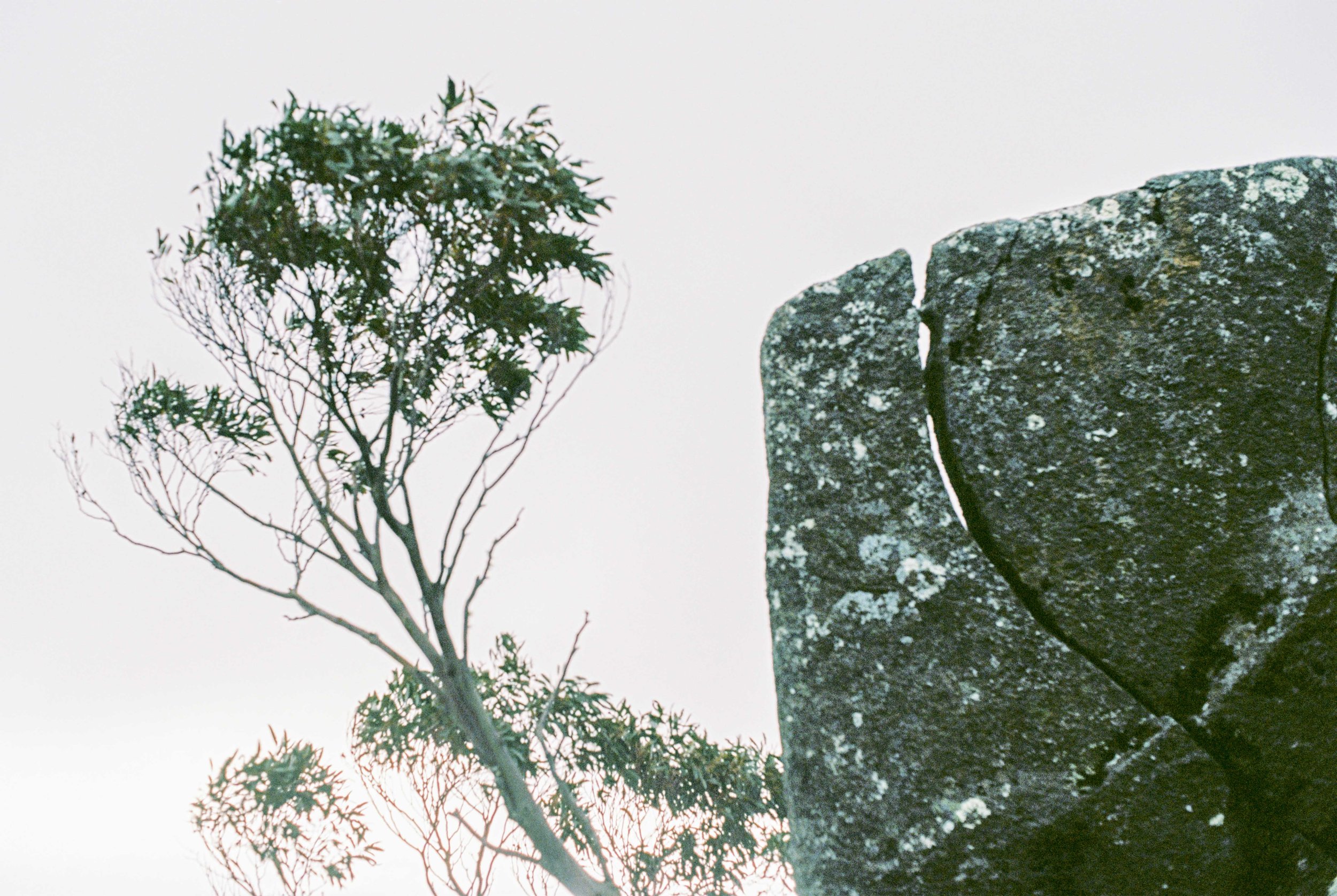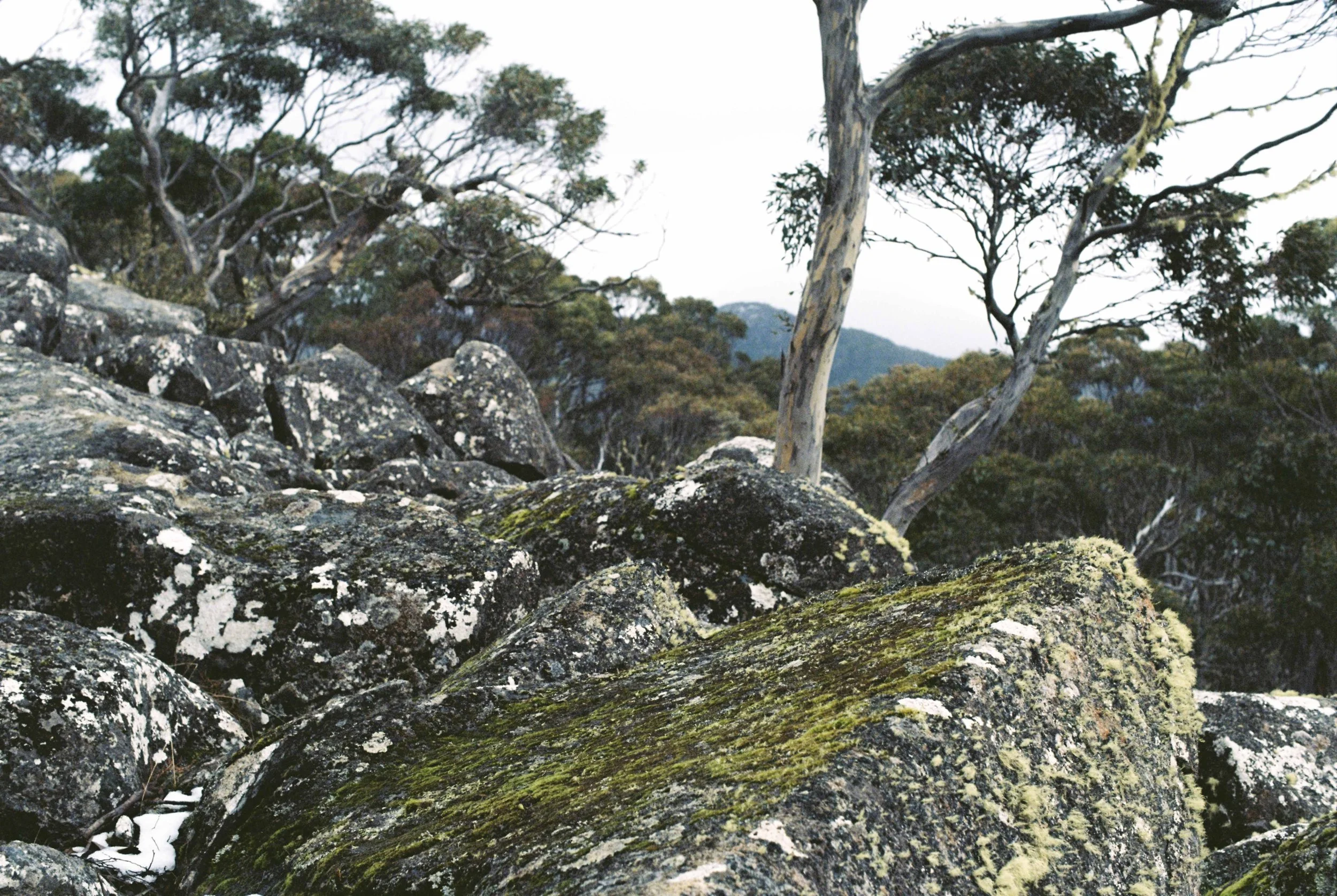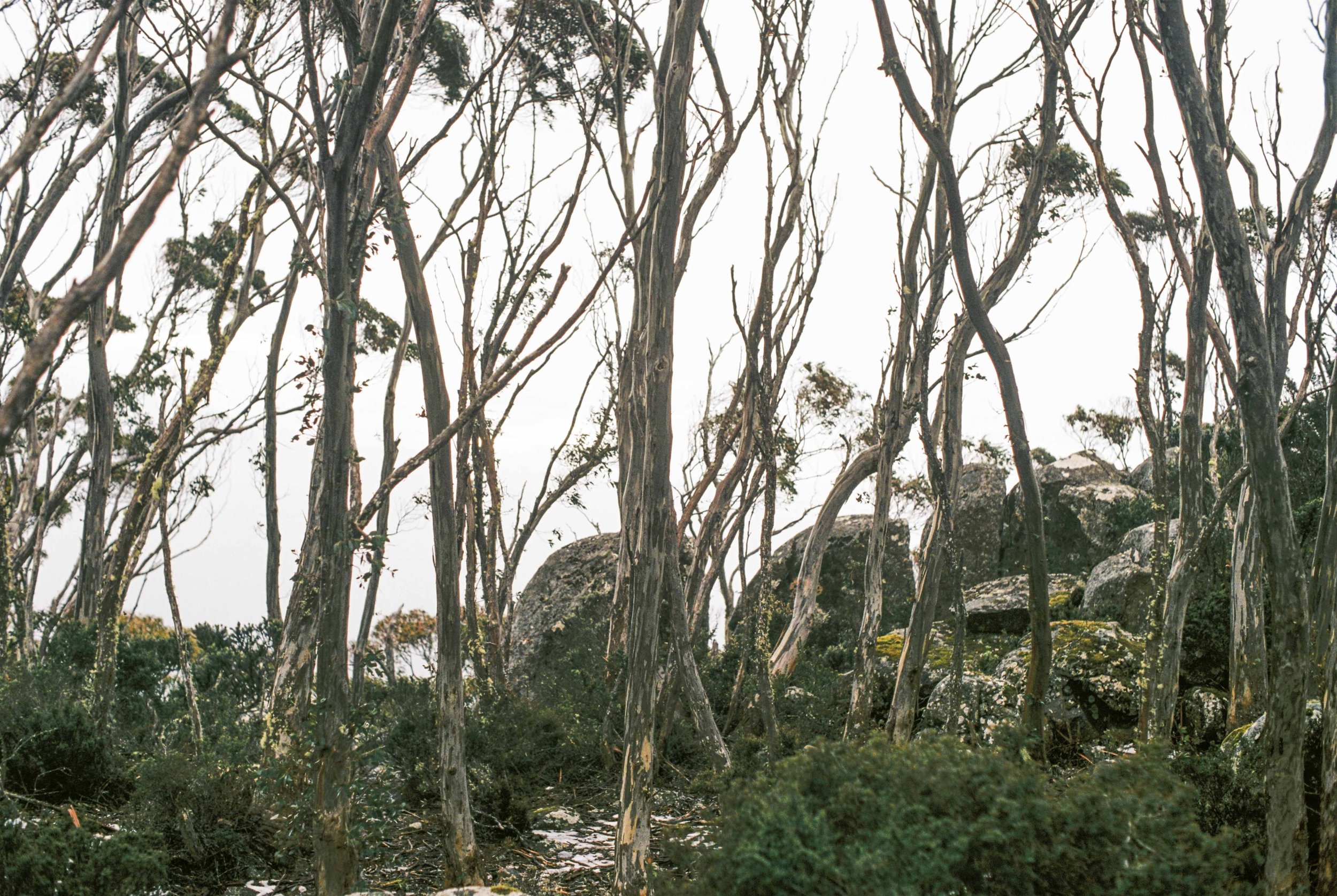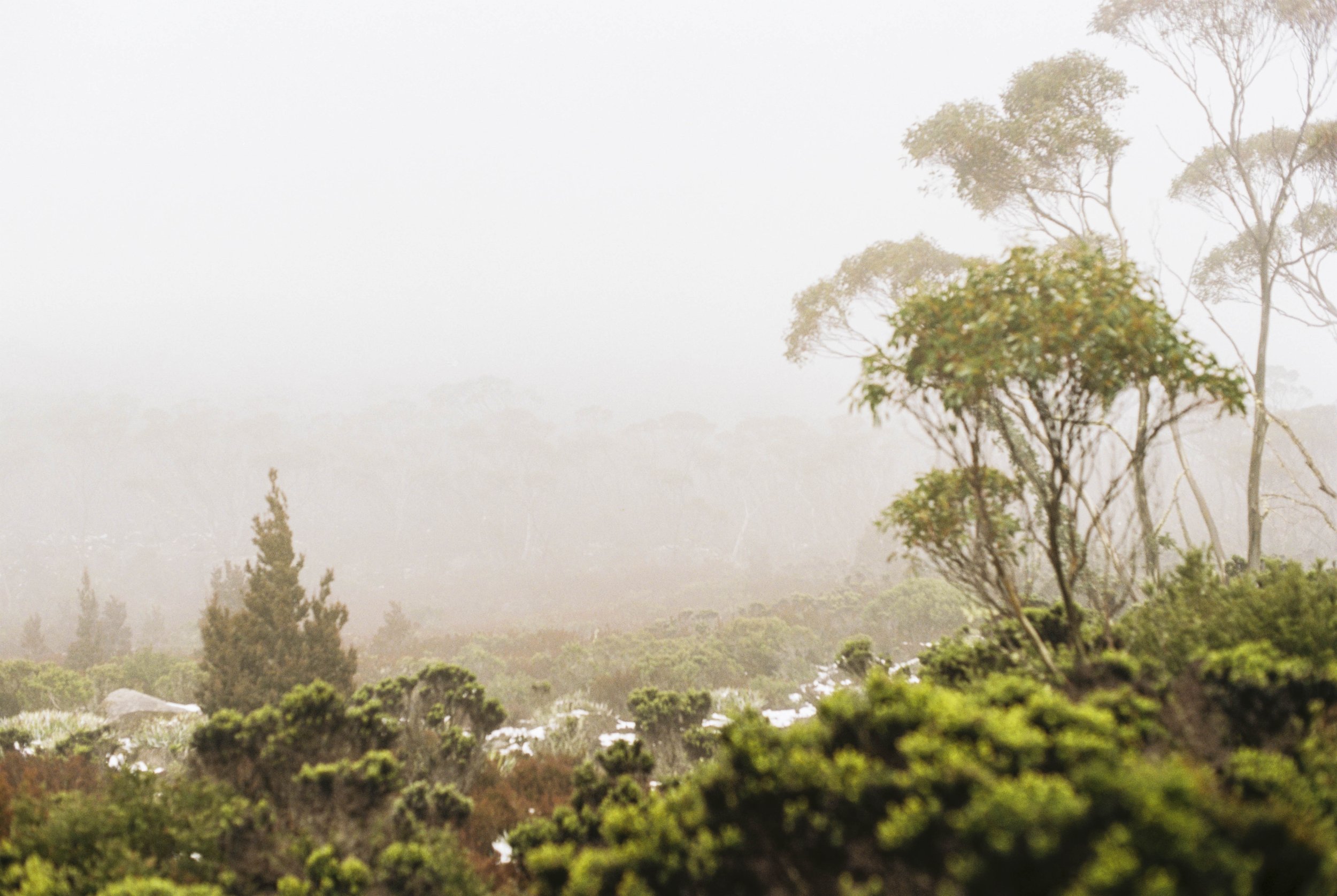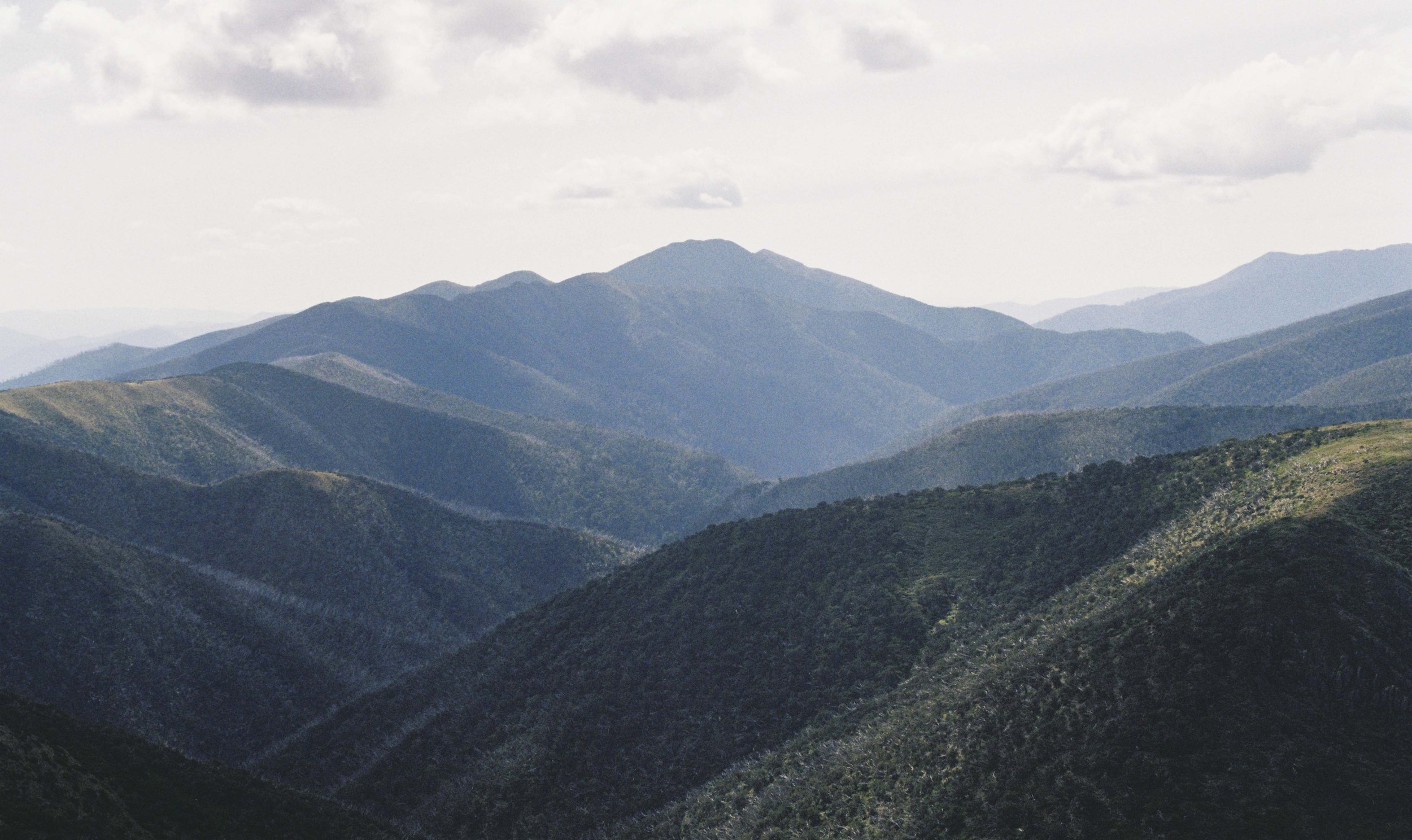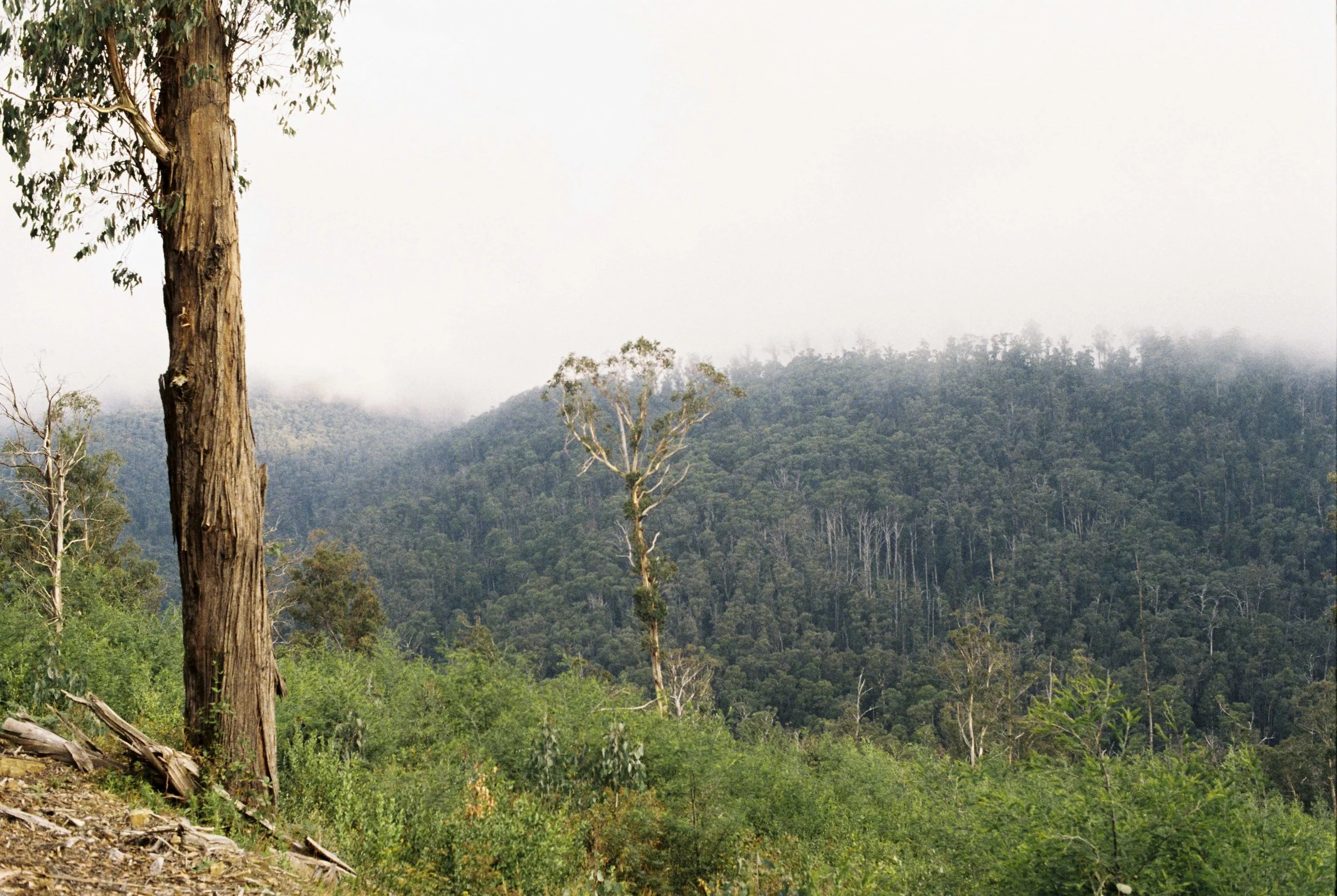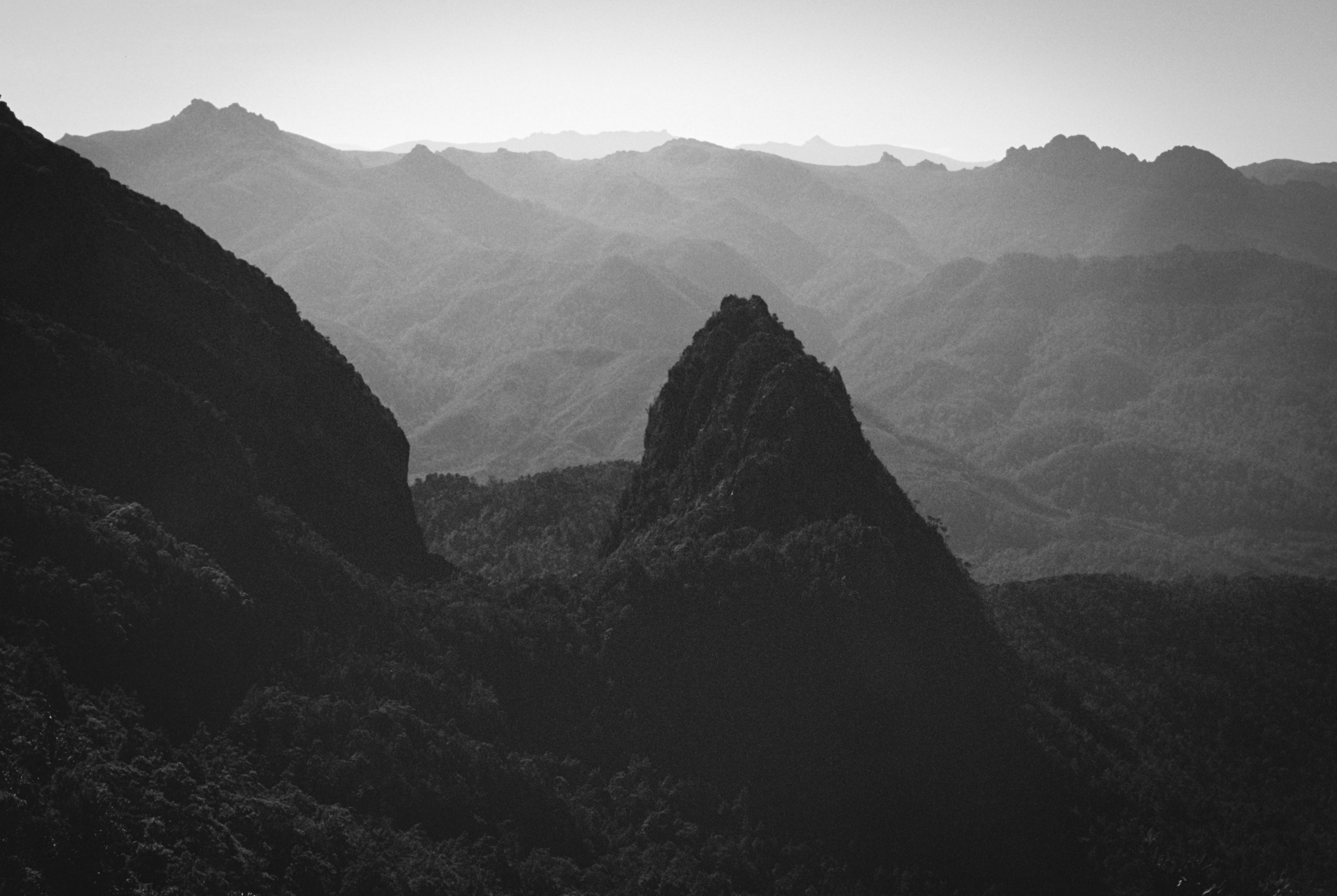The idea of a lost world that has not yet been discovered is captivating…
Misty morning at Lost World, kunanyi. Hasselblad 500cm, Ektar 100, Aug 2022.
The history of humanity is riddled with lost worlds. Empires rise and fall, people live and die and the great wheel keeps turning, day by day, year by year, aeon to aeon. The Pyramids of Giza in Egypt, the ruins of Machu Pichu in the Andes, the Acropolis of Athens and the Colosseus of Rome are all testaments to lost worlds. Worlds that have been and are no more. Although artifacts, histories and stories do remain. Some stories may or may not be true. Take the story of Atlantis. Here is the idea that there once existed a great civilization that has since been swallowed by the sea. It may be true or it may not be true, but the idea certainly captures the imagination. Is there any possibility that Atlantis has survived and has continued to function beneath the surface of the sea?
Young snowgum, misty cliffs. Hasselblad 500cm, Ektar 100, Aug 2022.
Before the era of satellites and before the entire surface of the Earth was mapped out with the use of remotely operated cameras, there was another idea that had captured the collective imagination. And this was the idea that somewhere in some unexplored part of the globe, there may exist a group of people that have never been in contact with western civilization. A land and people that have never been ‘discovered’. A world that is parallel to our own, yet separate from it. This has been the premise of many fictional novels and movies; the idea that a ‘lost’ world may exist simultaneously alongside our own. What would its people be like and what could we learn from them? And what would the fate of these people be, once the ‘modern’ world has made contact with them?
Soft light at Lost World, kunanyi. Hasselblad 500cm, Ektar 100, Aug 2022.
We now live in a world where secrets are becoming scarce. Unexplored places are dwindling, and nowhere is safe from the curious, prying eyes of our interlinked civilization. Perhaps a lost world does exist out there somewhere. Perhaps the thylacine still roams the land. Perhaps this belief is simply wishful thinking.
But even if there are no more parallel human worlds to discover, there are all the lost worlds that have been and are no more. And no matter how hard we try, we won’t ever uncover all the secrets of these lost worlds that have been and have since passed into oblivion.
A.S. -Lenah Valley 10/9/22
